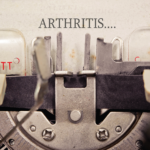Each species carries an olfactory repertoire unique to the genetic makeup of that species. The human repertoire is quite diverse, capable of detecting millions of airborne odorants in the tiniest concentrations. We exhibit tremendous variation in our genes that control the receptors in our olfactory epithelium, and this may relate to differences that relate to cross-cultural perception of and preference for certain smells. With age, humans experience differential olfactory dysfunction, with some odors, such as citrus or banana remaining strong and others, including many unpleasant ones, becoming increasingly faint.
What about the role of olfaction in autoimmune diseases? In a murine model, lupus-prone males spent less time exploring unfamiliar conspecifics and they demonstrated age-dependent performance deficits when exposed to low concentrations of attractant and repellant odors.7 The emergence of olfactory changes was associated with a skewed distribution of highly specific cells in the periventricular area of their brains, due to disrupted migration of neuronal precursor cells toward the olfactory bulb. Might olfactory memory deficit contribute to altered performance in other behavioral tasks? If so, this might reflect a prodrome of brain damage induced by this model of a chronic autoimmune disease.
Moving from the cage to the bedside, one can observe olfactory decline in many patients with systemic autoimmune diseases. Example: A recent study identified a reduction in olfaction in patients with GPA, but curiously, this observation was also noted in patients with inflammatory myopathies and rheumatoid arthritis.8,9 Surprisingly, the reduction was not related to the severity of sinus or nasal disease in GPA, rather the loss correlated to the degree of systemic inflammation.
More critically, reduced olfaction may serve as a marker for a host of neurodegenerative conditions, particularly the earlier detection of Alzheimer’s and Parkinson’s diseases, a finding that is used in the neurological bedside exam.5 Without a doubt, the most unexpected role for olfactory receptors has been the observation that the sperm of several mammalian species express olfactory receptors that are involved in sperm chemotaxis in humans.10 Go figure!
A Salty Taste
Although taste receptors were first identified on the tongue, where they initiate a signaling pathway that communicates information to the brain about the nutrient content or potential toxicity of ingested foods, they are also expressed in myriad tissues, from the airways and the gastrointestinal epithelia to the pancreas and the brain. The functions of many of these extra-oral taste receptors remain unknown, but emerging evidence suggests that bitter and sweet taste receptors in the airways serve as important sentinels of innate immunity.11
